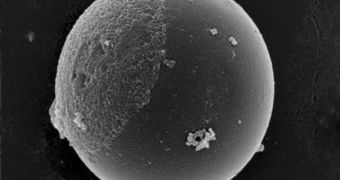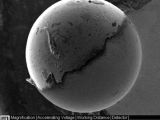Future generations of electronic display devices, sensors, and other such items will undoubtedly be based on nanoparticle technology, but one of the major issues that have plagued this field of research until now was the fact that scientists were unable to develop ways of controlling all aspects of their movements. This means that there were still unknown variables in the ways they went about in devices, which made them unreliable. Experts at the Duke University may have solved this issue.
They focused their efforts on a unique class of minuscule particles named Janus particles, after the two-faced Roman god. The goal was to make them appropriate for use in complex electronic devices, where harnessing all movements nanoparticles make it of the utmost importance. According to experts at the university, their new control method could easily allow for Janus particles to be used in such complex applications as electronic paper and self-propelling micromachines.
Regularly, these structures have one of their hemispheres covered in either metallic or magnetic coatings, which allows for it to be controlled using magnetic fields. Unfortunately, scientists realized, this type of construction also interfered with optical beams, or traps, another tool used to control them. By covering the Janus particles with a much smaller amount of coating, the Duke University team was able to make them compatible with optical traps and external magnetic fields.
“Past experiments have only been able to achieve four degrees of control using a combination of magnetic and optical techniques. We have created a novel Janus particle that can be manipulated or constrained with six degrees of freedom,” explains DU Pratt School of Engineering graduate student Nathan Jenness. Together with fellow graduate student Ranall Erb, he co-authored a new scientific study accompanying the achievement, which appears online in the latest issue of the respected scientific journal Advanced Materials.
“The solution was to create a particle with a small cap of cobalt that covers about a quarter of the particle. This gave the particle just enough of a magnetic handle to allow it to be manipulated by magnetism without interfering with the optical tweezers,” Erb says.
“Being able to more completely control these particles affords us a greater ability to measure the mechanical properties of biomolecules, including DNA. It may also be possible to control the behavior of cells by manipulating dot-Janus particles attached to cell surfaces. These biological applications, as well as the ability to control the assembly of nanostructures, establish the broad scientific value of these findings,” concludes DU assistant professor of mechanical engineering and materials science Benjamin Yellen.

 14 DAY TRIAL //
14 DAY TRIAL // 
